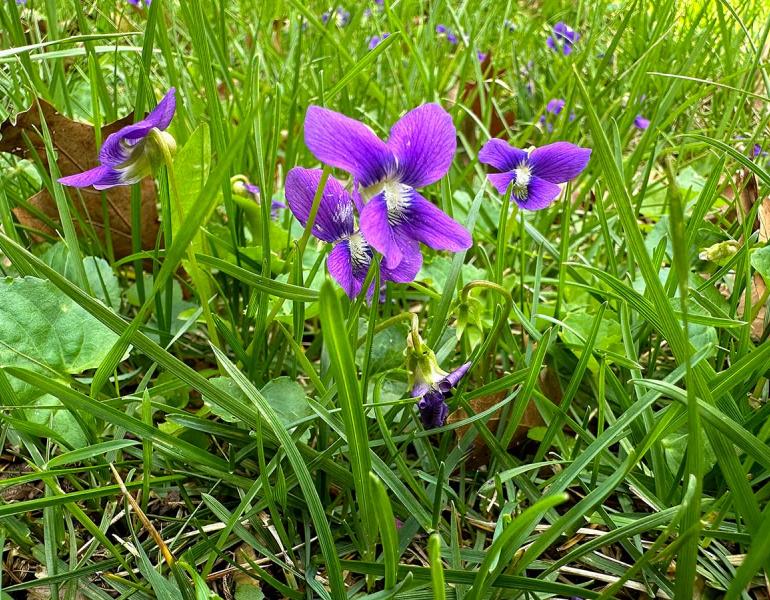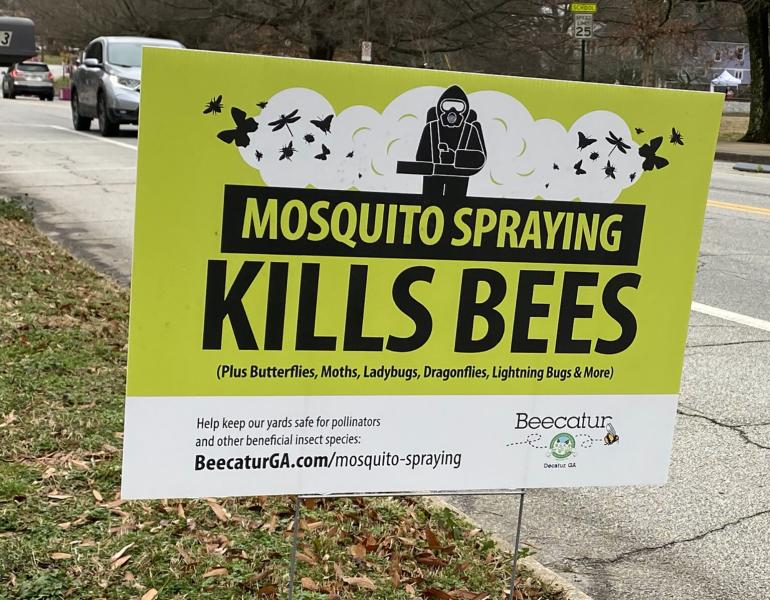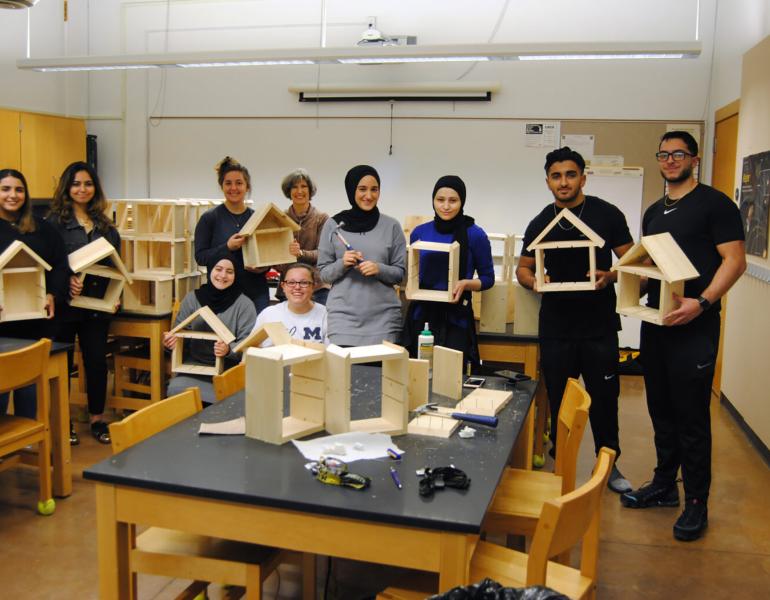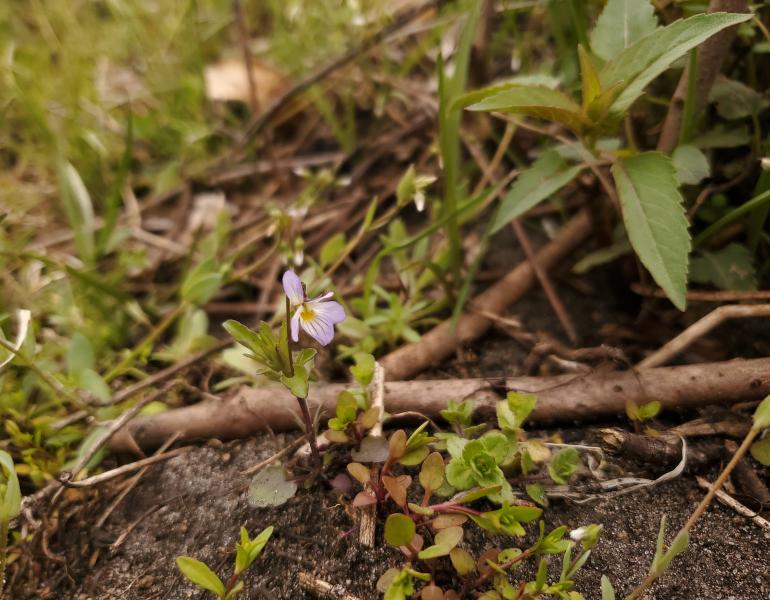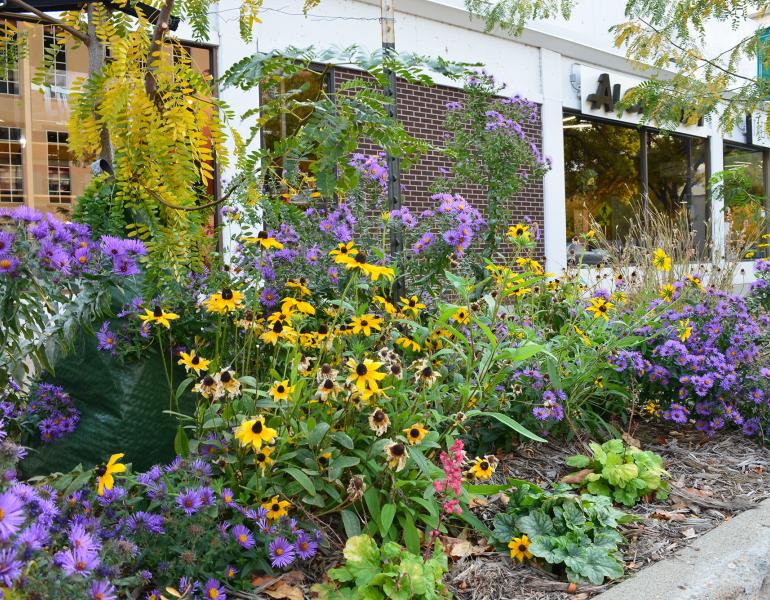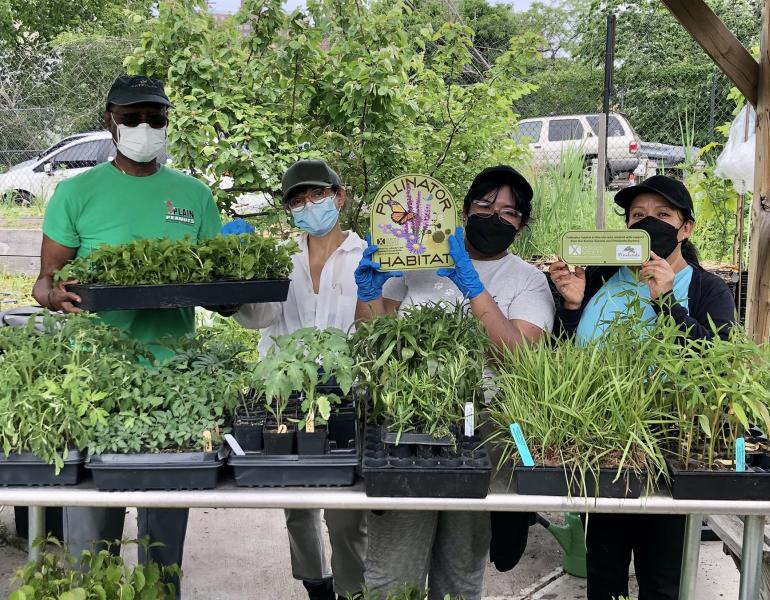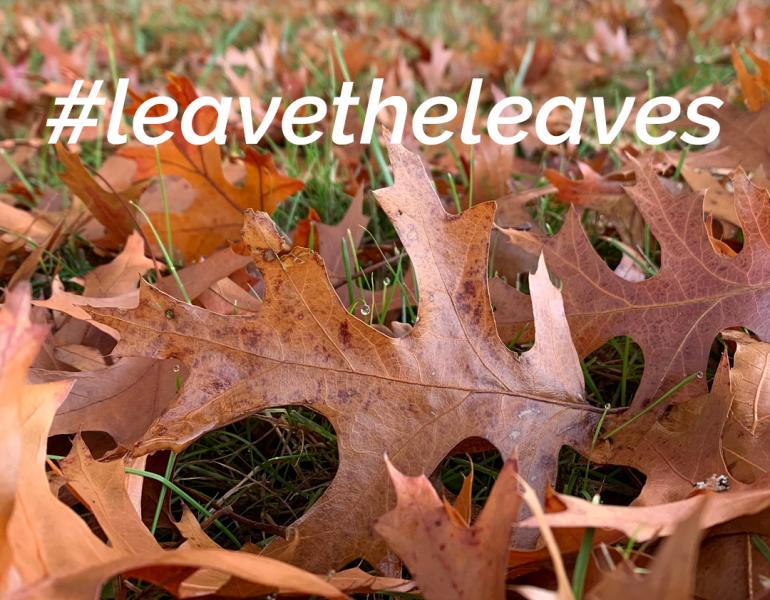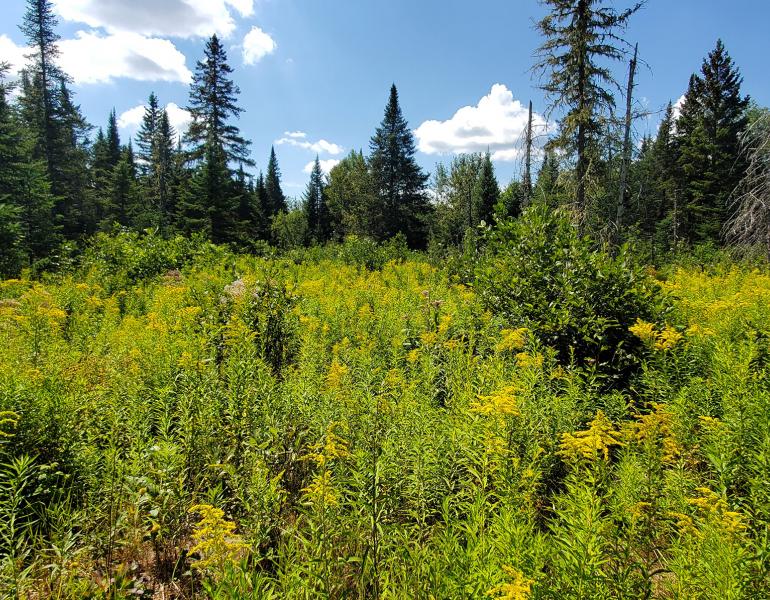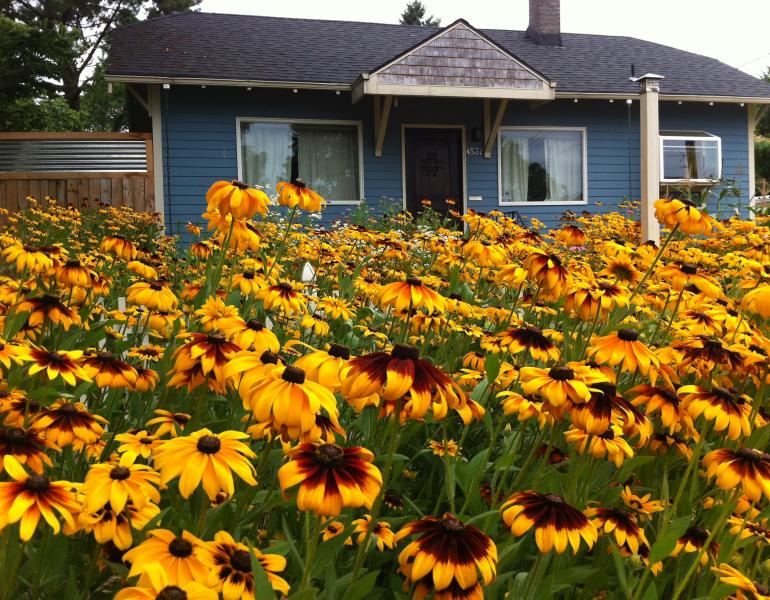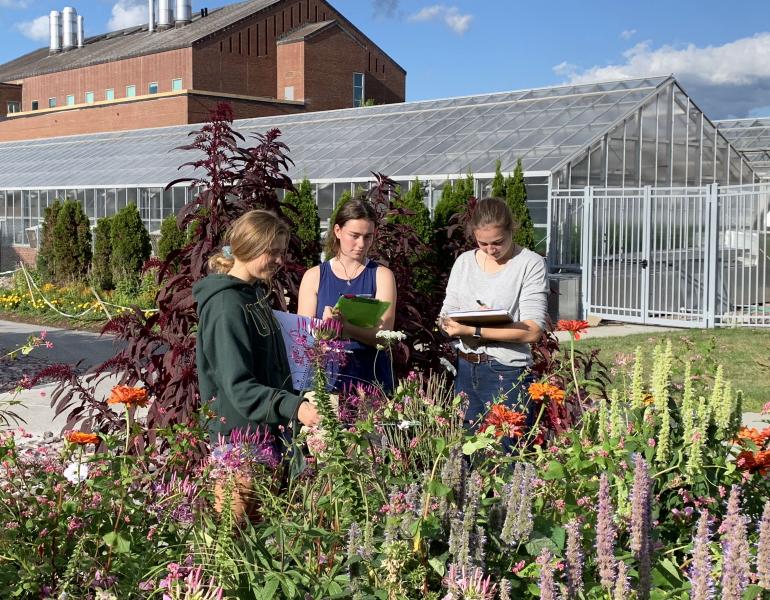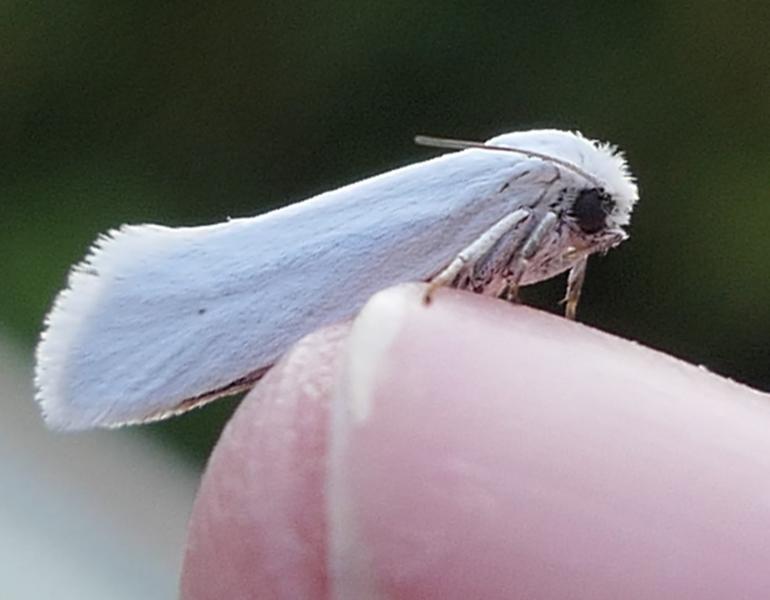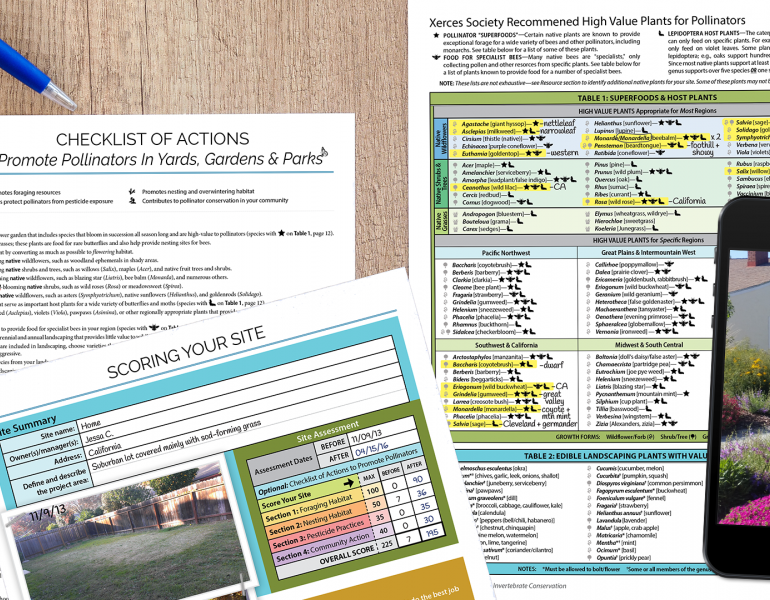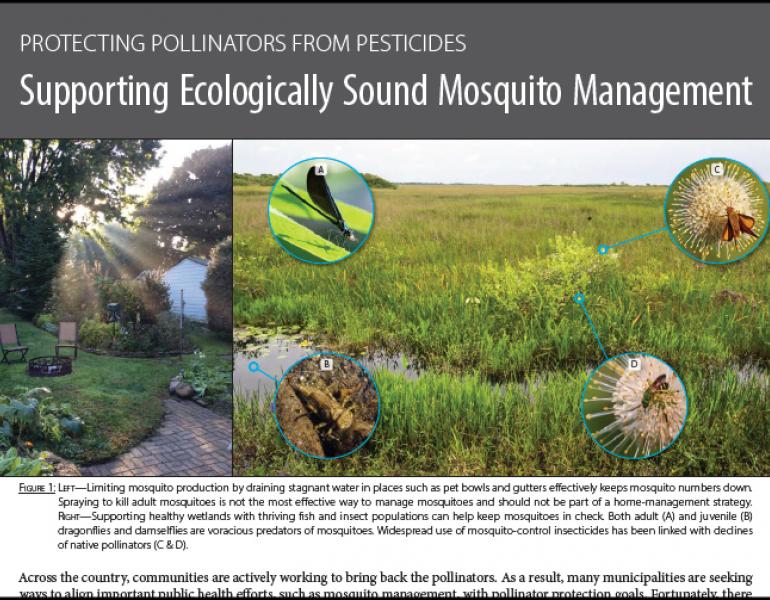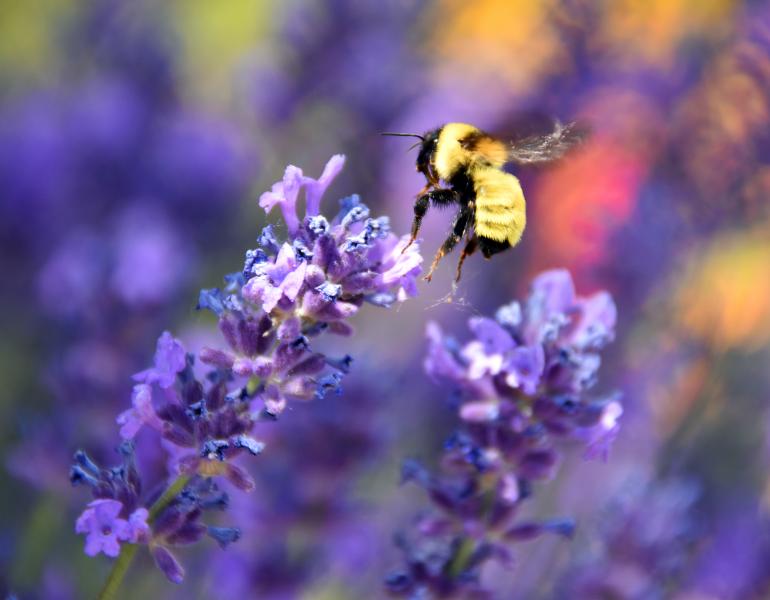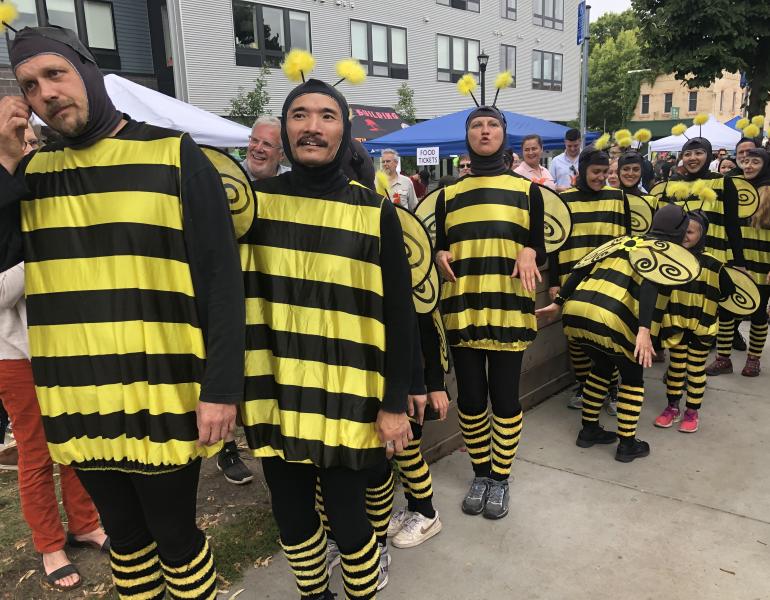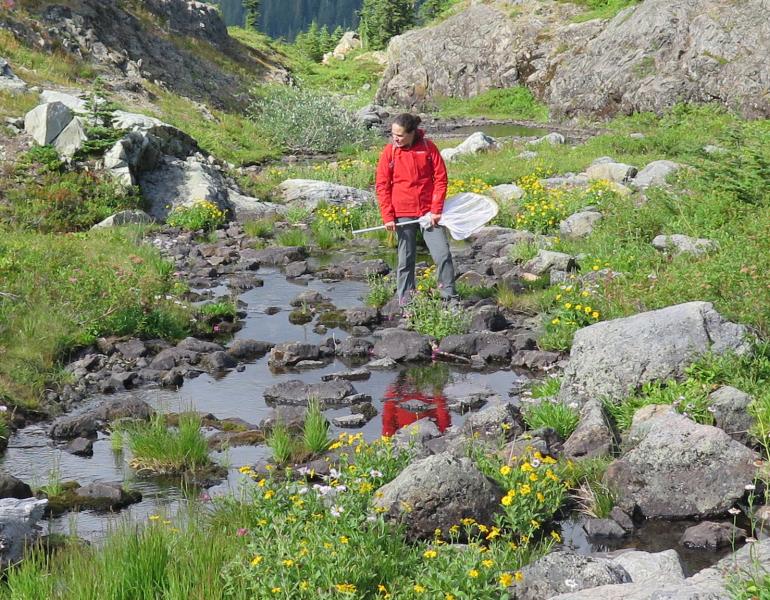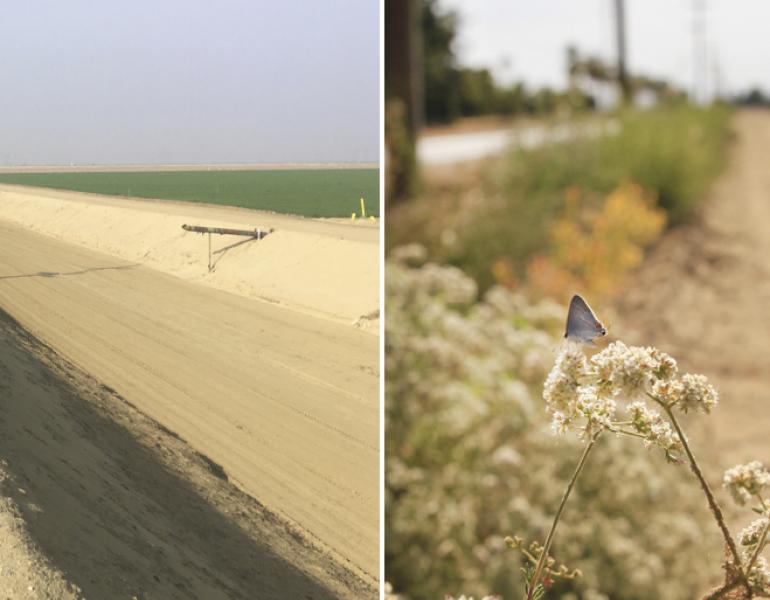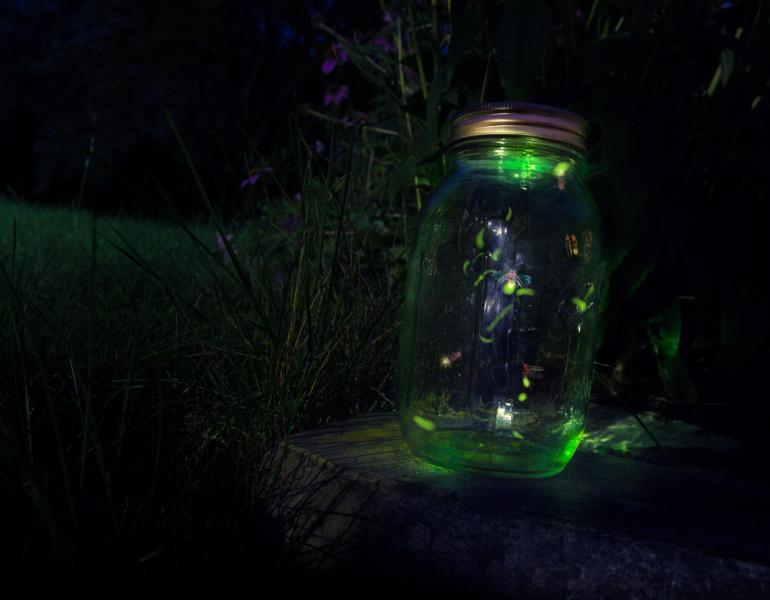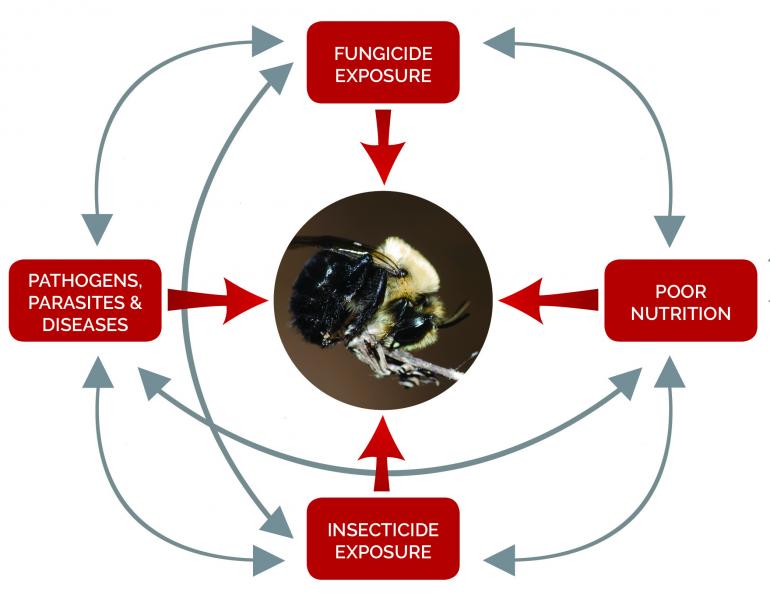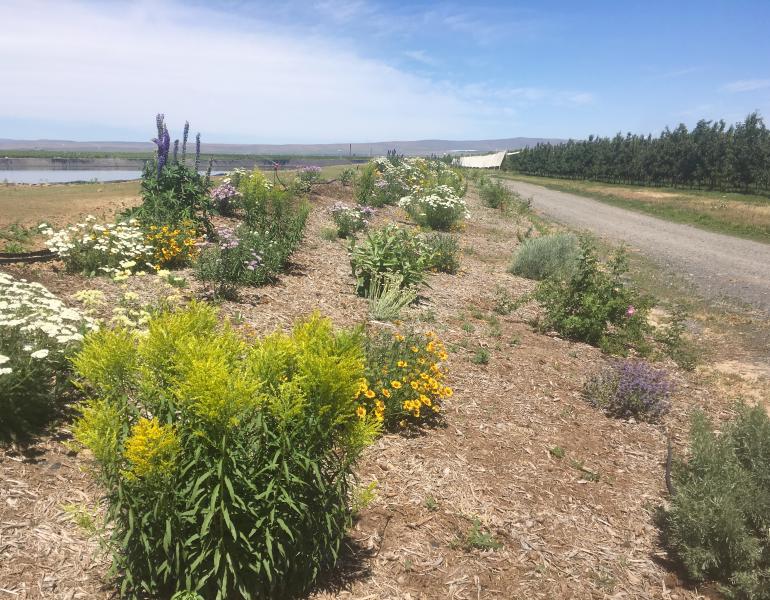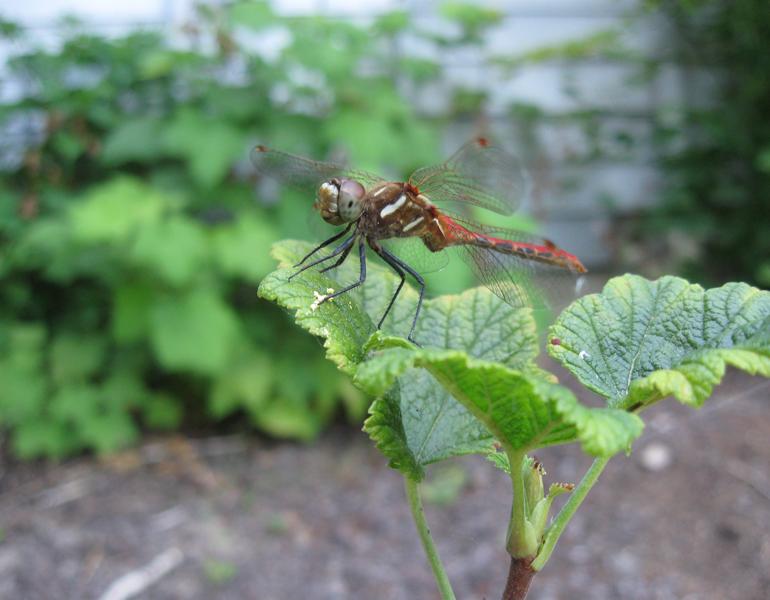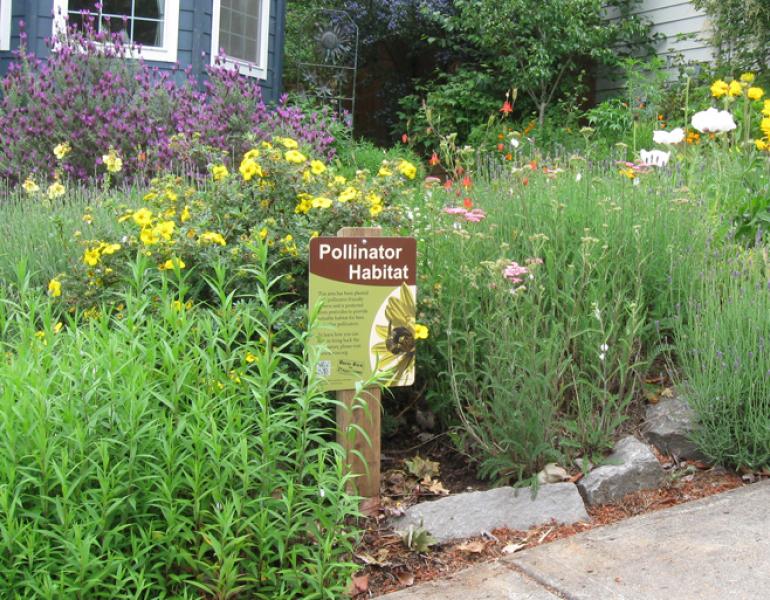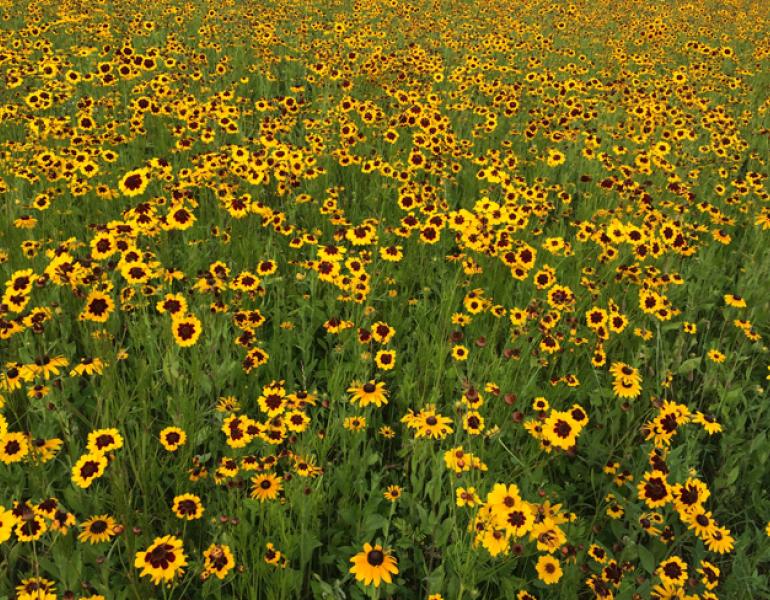"No Mow May" is a quick and catchy name for a movement that aims far beyond not mowing the yard for a month. It's a gateway to understanding how we share our lawns with many small creatures.
Cities and Towns
Stronger Together: How To Build Your Conservation Community This Earth Week
Building your community can help us do more for conservation, and lightens the load and keeps us coming back to the causes we care about. Here's how!
Inspiration for Pollinator Conservation: Habitat Kits for Urban Farms and Gardens
Stefanie Steele shares her path to pollinator conservation, and her work to help urban farmers add pollinator habitat to their spaces!
High School Students Depave a Parking Lot to Plant a Garden
With support from USDA NRCS, Xerces, and the local community, a Philadelphia high school parking lot became a space for gardening and pollinator habitat.
Planting for Bees, Butterflies, and Beauty in the Bronx
Two urban farms in the Bronx demonstrate a symbiotic relationship between people and pollinators. Communities at the Garden of Happiness and Tawqua Community Farm restore quality pollinator habitat and pollinators keep the gardens thriving and producing.
Four Steps You can Take to Bring Back the Pollinators
Bees and other pollinators are clearly facing challenges from habitat loss and pesticide use, even climate change. By managing our gardens, parks, and other greenspaces with pollinators in mind, we can transform our towns and cities to support the insects that are essential for a healthy environment—and if we all do something, together we can have a big impact. Xerces' Bring Back the Pollinators campaign provides one way to achieve this change.
Bee City USA Affiliate Spotlight: Decatur, GA
The Bee City USA and Bee Campus USA network includes more than 270 communities. The Decatur, GA, affiliate has made mosquito spraying by individual homeowners a central part of its advocacy efforts to protect pollinators.
Santa Fe Pollinator Habitat Kit Program Connects Pollinators and People
In Santa Fe, NM, Xerces is working with local partners to develop a city-wide Pollinator Trail focused on creating connected habitat through neighborhoods that lack greenspaces. In September, after months of planning and preparation, 350 habitat kits were distributed to residents and organizations. When many people come together around a common goal, small efforts can quickly add up to large-scale conservation.
Bee City USA & Bee Campus USA Affiliate Spotlight: University of Michigan-Dearborn
Pollinators are in decline, but what can a small or medium-sized university or college do to help? As it turns out, plenty. The University of Michigan-Dearborn has an outsized, long, and rich tradition of promoting environmental education and sustainability, especially in regards to pollinators—and in autumn 2019, was certified as a Bee Campus USA affiliate.
The Return of Wild Pansies at Polk City Cemetery
In Iowa, volunteers are working hard to restore an area of old prairie. They are seeing signs that the grassland is recovering, including the regrowth of pale coneflowers and wild pansies.
Pollinator Conservation Program Digest – July 2021
In July's Pollinator Team Digest, Sarah Hamilton Buxton describes a multi-organization collaboration bringing pollinator plantings to the heart of Bismarck, ND, and Jennifer Hopwood introduces the amazing life beneath our feet that is at the center of a new conservation initiative focused on soil life.
Pollinator Protection Starts at Home—and can Spread Faster than Weeds!
Something as simple as observing the bees and other pollinators in your garden is a wonderful way to celebrate Pollinator Week. Late June is a time when, across the county, bees and butterflies are emerging and making themselves known. It is also a great time to pledge to do more for all these amazing creatures.
Building Resilient Communities: Reflecting on a Year of Challenge and Opportunity for Bee City USA & Bee Campus USA
The accomplishments of Bee City USA and Bee Campus USA communities during the last year are a textbook example of resilience. Rather than canceling projects and activities, the committees adapted to the new conditions, finding ways to continue creating spaces for our ecological communities to do the same.
Pollinator Conservation Program Digest – June 2021
In this month's update from our pollinator conservation team, Kelly Gill reports on the successful distribution of habitat kits across a nine-state region of the Mid-Atlantic and Northeast, and Sarah Foltz Jordan describes a multi-farm project to expand pollinator habitat in Wisconsin.
New in Santa Fe: Pollinator Trail and Habitat Kit Program
Santa Fe, New Mexico, is the home of our pilot Pollinator Trail program, which aims to address habitat loss in urban areas. The project will create connected, climate-resilient pollinator habitat in an urban landscape through the distribution of habitat kits and development of partnerships with local organizations to conduct pollinator conservation outreach.
Planning and Planting for the Future of Monarchs in California
Pismo State Beach is one of the most important overwintering sites for monarchs in California. It has regularly hosted over 10% of the entire western monarch population each winter. Xerces Society has partnered with California State Parks, Creekside Center for Earth Observation, and others to develop and implement a plan to restore and enhance the site’s ability to host monarchs.
Leave the Leaves to Benefit Wildlife
For many people fall cleanup means cutting all the seed heads and stems off the flowers and raking up all of the leaves. This tidiness may look nice to us, but it is not good for all of the small creatures that live in and around your property. #leavetheleaves
Pollinators Take Priority as Xerces Expands Work in New Mexico
New Mexico boasts an impressive diversity of pollinators, driven by the variety of landscapes and plant communities within the state. Fortunately for pollinators, the Xerces Society expanded their pollinator conservation efforts this year by adding a new regional position, the Southwest Pollinator Conservation Specialist, based in Santa Fe, New Mexico.
Pollinator Conservation Program Digest - November 2020
In this edition of our monthly pollinator team digest, Kelly Gill offers an update on the New England Pollinator Partnership, and Jennifer Hopwood shares her experience of creating a backyard pond—not our usual fare for pollinator updates, but a great addition to any wildlife garden.
How to Identify and Respond to Pests at Home
Problems arise in even the most well-planned gardens, and it can be frustrating to see your plants suffering from an insect pest or disease. Learn how you can identify and respond to pests in your home garden and yard in ways that maintain the health and resilience of your local ecosystem.
Celebrating a Year of Enacting Positive Change: Bee City USA & Bee Campus USA
National Pollinator Week offers an opportunity to celebrate the importance of bees, butterflies, moths, flies, beetles, and the many other pollinators. It is also a time to celebrate the individuals and organizations that make up the affiliates of Bee City USA and Bee Campus USA for the amazing work they did during the last year to conserve our essential, and increasingly declining pollinators.
The Night Shift: Moths as Nocturnal Pollinators
The work of pollination is never over—even after dark! While some flowers close when the sun goes down (the technical term for this is floral nyctinasty), most flowers are still accessible at night. When our day-active (diurnal) pollinators turn in for the evening, nocturnal pollinators such as moths, bats, beetles, and even some species of bees take on the night shift to feast on nectar.
How to Maximize Benefits to Pollinators in Cities and Towns
Pollinators are one of the easiest groups of declining animals to support in a residential landscape, since even small spaces have the potential to meet the most basic needs of the entire insect life cycle—and even simple changes to our landscaping can make a huge difference to these animals. Here at the Xerces Society, we recently created an Urban Habitat Assessment tool, designed to help you see your yard through the eyes of a pollinator, identify areas for improvement, and prioritize actions you can take to promote these insects in your yard and community.
Start Now To Prevent Mosquito-Borne Disease and Keep Our Pollinators Safe
The Xerces Society’s new fact sheet, Smarter Pest Management: Responding to Mosquito-Borne Disease and Protecting Pollinators, highlights ways for everyone to prevent mosquito-borne disease, with recommendations that are backed by the Centers for Disease Control and Prevention (CDC).
This Earth Week, Let's Bring Communities Together to Protect Pollinators
Bee City USA provides a framework for communities to work together to conserve native pollinators by providing them with healthy habitat, rich in a variety of native plants, and free to nearly free of pesticides.
Pollinator Conservation Program Digest - February 2020
For February, we are welcoming Alina Harris, who has filled our brand-new role of Integrated Pest and Pollinator Management Specialist and NRCS Partner Biologist in New Hampshire, and looking ahead to our expanding role in New Mexico.
Evolution in Attitudes Leads to Greater Interest in Pollinator Conservation
Twenty years ago, being referred to as the “bee guy” wasn’t always positive. In contrast, today many people are keen to learn about what they can do to protect pollinators. We are proud to be part of the reason that the public has become more aware of, and engaged in, pollinator conservation.
Support Pollinator Conservation by Reducing or Eliminating Pesticide Use in Urban Environments
Our new fact sheet, Smarter Pest Management: Pollinator Protection for Cities and Campuses, outlines key steps to reduce or eliminate pesticide use in municipal parks, campuses, and other urban greenspaces.
Xerces' Holistic Approach to Conservation
We at the Xerces Society view our work as an interconnected whole rather than as separate parts. To achieve conservation success, we must understand both science and policy. We need to inspire people and at the same time empower them with the tools they require.
Insect Apocalypse? What Is Really Happening; Why it Matters; and How We All Can Help
Studies from across the world show that insects are declining. There is much we do not know, but we do know enough to take action now.
Pollinator Conservation Program Digest – November 2019
As both a Pollinator Conservation Specialist and our Bee Better Certified Program Coordinator, Cameron Newell works to transform agricultural landscapes by providing pollinator habitat and support for beneficial insects.
Bee City USA Begins a New Chapter
We're celebrating the achievements of Bee City USA founder Phyllis Stiles as she moves on to a well-deserved retirement and passes the torch to Bee City USA Coordinator Molly Martin.
Nature Close to Home: Reimagining Gardens to Support Invertebrates
Scott Hoffman Black, executive director of the Xerces Society, encourages gardeners to increase the diversity of native plants, ensure that there are places for insects to nest, and avoid using pesticides.
New Xerces Fact Sheet Takes a Deeper Look at Fungicides and Their Effects on Pollinators
Introducing Protecting Pollinators from Pesticides: Fungicide Impacts on Pollinators.
Pollinator Conservation Program Digest – June 2019
June’s featured staff share their work with partners in large-scale agriculture in central Washington, family farms in Wisconsin, and a unique urban agriculture fellowship program in Virginia.
Managing Invertebrate-Friendly Gardens
Many Xerces Society members create wildlife gardens that are particularly hospitable to invertebrates. Here are three wonderful examples.
Bee City USA: Galvanizing Communities to Reverse Pollinator Decline
Collectively, urban and suburban areas have the potential of offering millions of acres of life-giving habitat to pollinators.
Bring Back the Pollinators During National Pollinator Week
With Pollinator Week upon us, now is the time to reaffirm our commitment to protecting these vital invertebrates. Here are some tangible ways to help.
Bee City USA Mobilizes Communities to Support Imperiled Pollinators—Here’s How to Join
Earth Week is an inspiring time, brimming with opportunities to make a difference—including getting your community certified as a Bee City USA.
Pledge to Bring Back the Pollinators—on Earth Day and Every Day
During Earth Week 2019, we are asking you to consider taking simple, yet impactful, steps to make the world better for bees, butterflies, and other essential invertebrates.
Mitigating the Effects of Heat on Urban Pollinators
Climate change will bring higher temperatures and greater extremes in weather, as well as increases in the frequency and intensity of heat waves. These variations will be exacerbated in cities in ways that may spell trouble for bees.
Pollinator Conservation Program Digest – February 2019
February’s featured staff member has been working on a hedgerow incorporating diverse native species in North Carolina. Here she reports on its progress and the interesting invertebrates sighted on the plantings!
Cedaroak Park Primary School Gardens Offer Learning Opportunities
Jenni Denekas, Xerces' web and communications coordinator, writes, "Being assigned to create an interpretive panel for Cedaroak Park Primary School, where I attended grade school, was a special experience."
Xerces Society + Bee City USA = A Match Made in Pollinator Heaven
Bee City USA brings a unique approach that encourages cities and college campuses across the United States to develop and implement a plan for helping pollinators.
Bee Friendlier with Your Lawncare
If you’re ready to re-think your lawn, read on for practical advice and small changes that can help support pollinators and a healthier planet.
10 Ways to Celebrate Earth Day
Here are some ways you can work to promote a healthy planet for invertebrates and the people they let share their planet.
How Our Gardening Choices Affect the Health of Our Waterways
Pesticide Program Director Aimee Code shares thoughts on her garden, information about pesticide impacts to our watershed, and news about upcoming Xerces projects in this article from Wings Magazine.
Staff Stories: Life in the Suburbs
Our Communications Director Matthew Shepherd shares stories of creating a mini wildlife sanctuary in his Portland, OR garden, and the many plant/insect interactions that have brought his family so much enjoyment in a suburban space.
New Fact Sheet Highlights Risks to California’s Surface Water from Insecticides
Neonicotinoids have been found in California’s rivers and streams at levels known to harm or outright kill aquatic invertebrates.
Protecting Pollinators One Community at a Time
Pollinators need habitat that is protected from pesticides. Learn how you can encourage your local government to adopt policies that protect pollinators.
Are you up for the Million Pollinator Garden Challenge?
Can the nation establish a network of one million pollinator gardens within two years? Yes we can!
A Mother-and-Son Perspective on a Pollinator Garden
Alice Vaughan wrote a lovely narrative of her bee garden on Cape Cod in Massachusetts. Alice’s son, Mace (who co-directs our pollinator program), added his memories of sharing in the garden.


